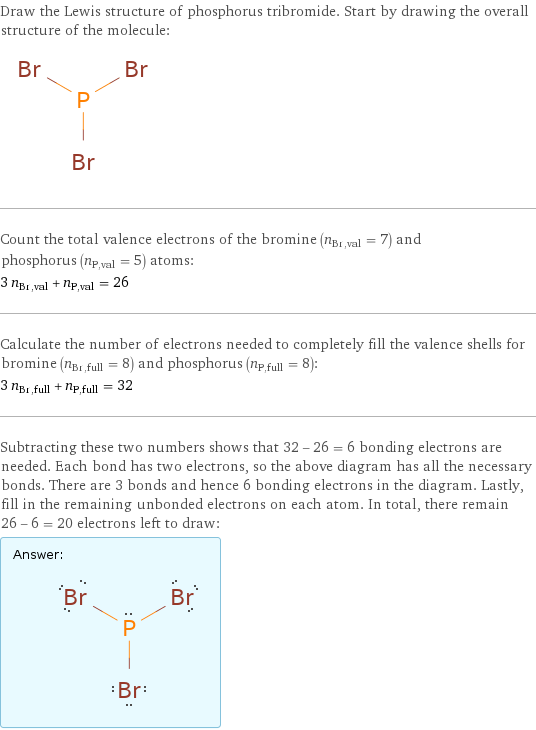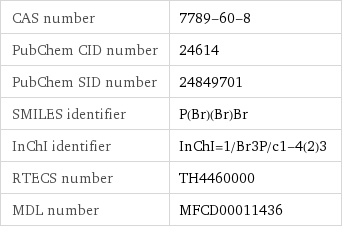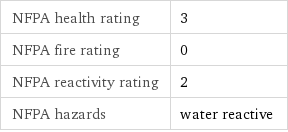Input interpretation

phosphorus tribromide
Chemical names and formulas

formula | PBr_3 Hill formula | Br_3P name | phosphorus tribromide IUPAC name | tribromophosphane alternate names | phosphorous bromide | phosphorous tribromide | phosphorus bromide | phosphorus(III) bromide | tribromophosphane mass fractions | Br (bromine) 88.6% | P (phosphorus) 11.4%
Lewis structure

Draw the Lewis structure of phosphorus tribromide. Start by drawing the overall structure of the molecule: Count the total valence electrons of the bromine (n_Br, val = 7) and phosphorus (n_P, val = 5) atoms: 3 n_Br, val + n_P, val = 26 Calculate the number of electrons needed to completely fill the valence shells for bromine (n_Br, full = 8) and phosphorus (n_P, full = 8): 3 n_Br, full + n_P, full = 32 Subtracting these two numbers shows that 32 - 26 = 6 bonding electrons are needed. Each bond has two electrons, so the above diagram has all the necessary bonds. There are 3 bonds and hence 6 bonding electrons in the diagram. Lastly, fill in the remaining unbonded electrons on each atom. In total, there remain 26 - 6 = 20 electrons left to draw: Answer: | |
3D structure

3D structure
Basic properties

molar mass | 270.69 g/mol phase | liquid (at STP) melting point | -41.5 °C boiling point | 175 °C density | 2.88 g/cm^3 solubility in water | reacts
Units

Liquid properties (at STP)

density | 2.88 g/cm^3 vapor pressure | 13.96 mmHg dynamic viscosity | 0.001302 Pa s (at 60 °C) surface tension | 0.0458 N/m refractive index | 1.697
Units

Thermodynamic properties

specific heat capacity c_p | gas | 0.2808 J/(g K) molar heat capacity c_p | gas | 76 J/(mol K) specific free energy of formation Δ_fG° | gas | -0.6014 kJ/g | liquid | -0.6491 kJ/g molar free energy of formation Δ_fG° | gas | -162.8 kJ/mol | liquid | -175.7 kJ/mol specific heat of formation Δ_fH° | gas | -0.5146 kJ/g molar heat of formation Δ_fH° | gas | -139.3 kJ/mol molar heat of vaporization | 40.5 kJ/mol | specific heat of vaporization | 0.15 kJ/g | (at STP)
Chemical identifiers

CAS number | 7789-60-8 PubChem CID number | 24614 PubChem SID number | 24849701 SMILES identifier | P(Br)(Br)Br InChI identifier | InChI=1/Br3P/c1-4(2)3 RTECS number | TH4460000 MDL number | MFCD00011436
NFPA label

NFPA label

NFPA health rating | 3 NFPA fire rating | 0 NFPA reactivity rating | 2 NFPA hazards | water reactive
Toxicity properties

RTECS classes | other